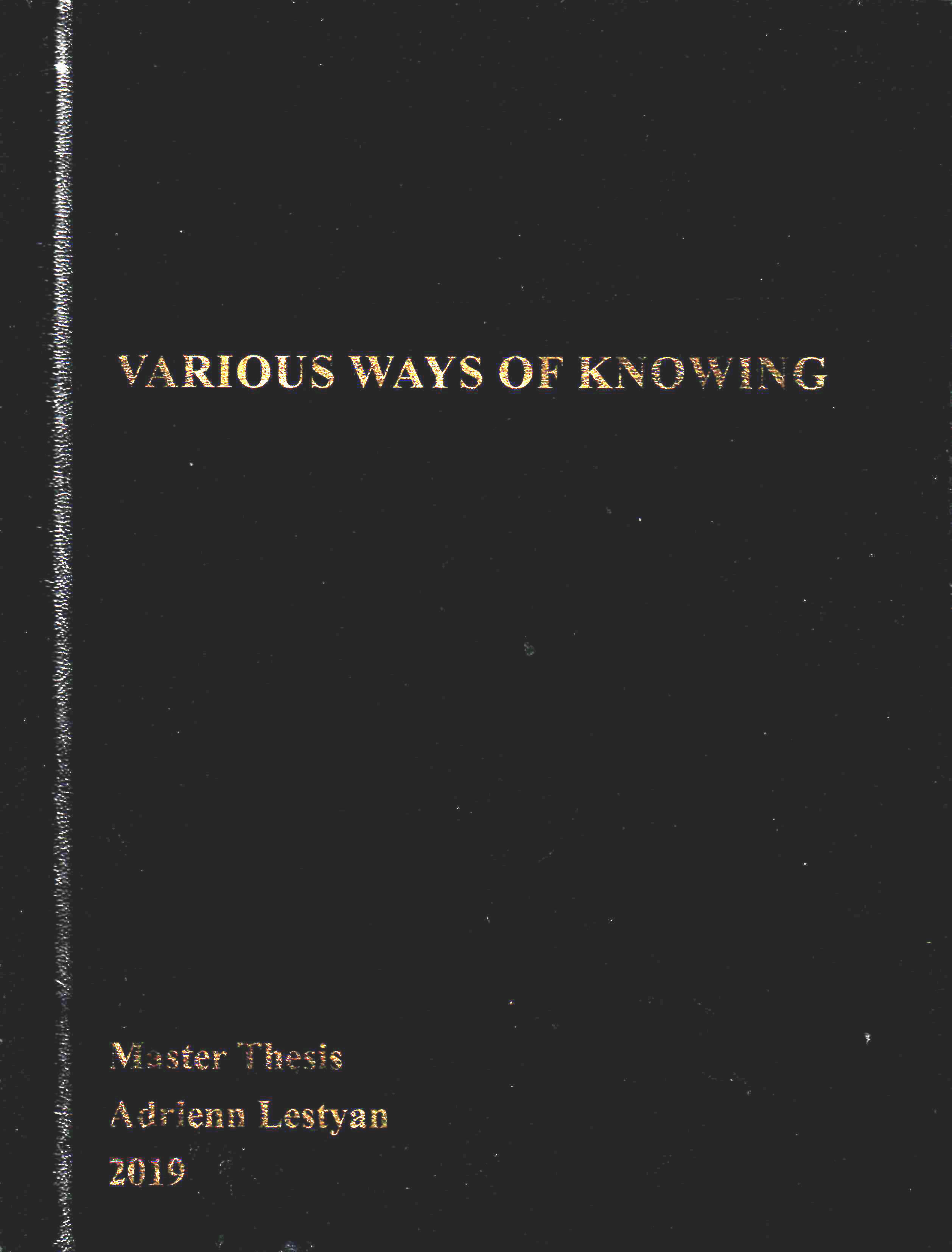
Various Ways of Knowing
Adrienn Lestyan (2019)
Master Thesis Research
About
The history and phenomenology of human senses leave much to investigate in terms of aesthetic discernment and conceivable social change by the rearrangement of the senses—considering the supremacy of vision in the Western society as a hindrance for a more acute awareness laying on multisensory engagement.
I believe that we humans are overexposed to visuals in our contemporary environment to the extent when the significance of visual images may start to fade but most definitely changes.
Yet vision is widely recognized as the reliable source of knowledge and discovery, therefore assigned to authoritative power and the masculine. Secondary senses such as smell, touch, or hearing are environed in subjectivity and abstruseness. Their objective position is rather difficult to grasp in an established scientific manner hence they are often considered inexplicable or even mysterious, therefore associated with the feminine.
After discussing the relevant literature and historical context in the first part of the paper, the present research is a case study supported by interviews and the examination and analytical comparison of immersive multisensory artworks that challenge their audiences’ vision. In the following chapters, the relevant artistic examples are presented and analyzed such as Haptic Fields by Chris Salter & TeZ; Osmodrama via Smeller 2.0 by Wolfgang Georgsdorf; Imagining the Hyperspace by IOANN & Paul Oomen; and Sta/g-mos by Kate De Lorme, completed by other artistic examples from Anicka Yi, Eduardo Kac and others.
In each studied case, a different combination of the senses has been brought to the foreground. The final chapter of the thesis incorporates a discussion reviewing the analytical coding of the interview materials. In a nutshell, this section addresses social, cultural, and aesthetic motives, the audience engagement within a challenging narrative path, and the spatial and sensory design strategies that aforementioned artists implement to take control over the visitors’ sensory perception. Considering our overexposure to visual inputs and images in the modern world, creating and curating immersive artistic content that engages a variety of senses and challenges the inadequate presentation of sensory encompassment creates novel environments for insightful experiencing and learning. Therefore, this study takes on an opportunity to look closely at the implications of the above-mentioned examples in terms of the audience experience, and to start an investigation of the human condition concerning these experiences.
In my thinking, encouraging artistic exploration in terms of taking control over sensory perception to rearrange the established sensory operational system facilitates audience experiences with growing consciousness and introspection. This attitude may result in increasing social responsibility that is in line with a prospect for questioning preset orders and existing power structures in society that are intimately bound to an antiseptic visual culture.
The author of this work conducted part of her Master thesis research at the Spatial Sound Institute